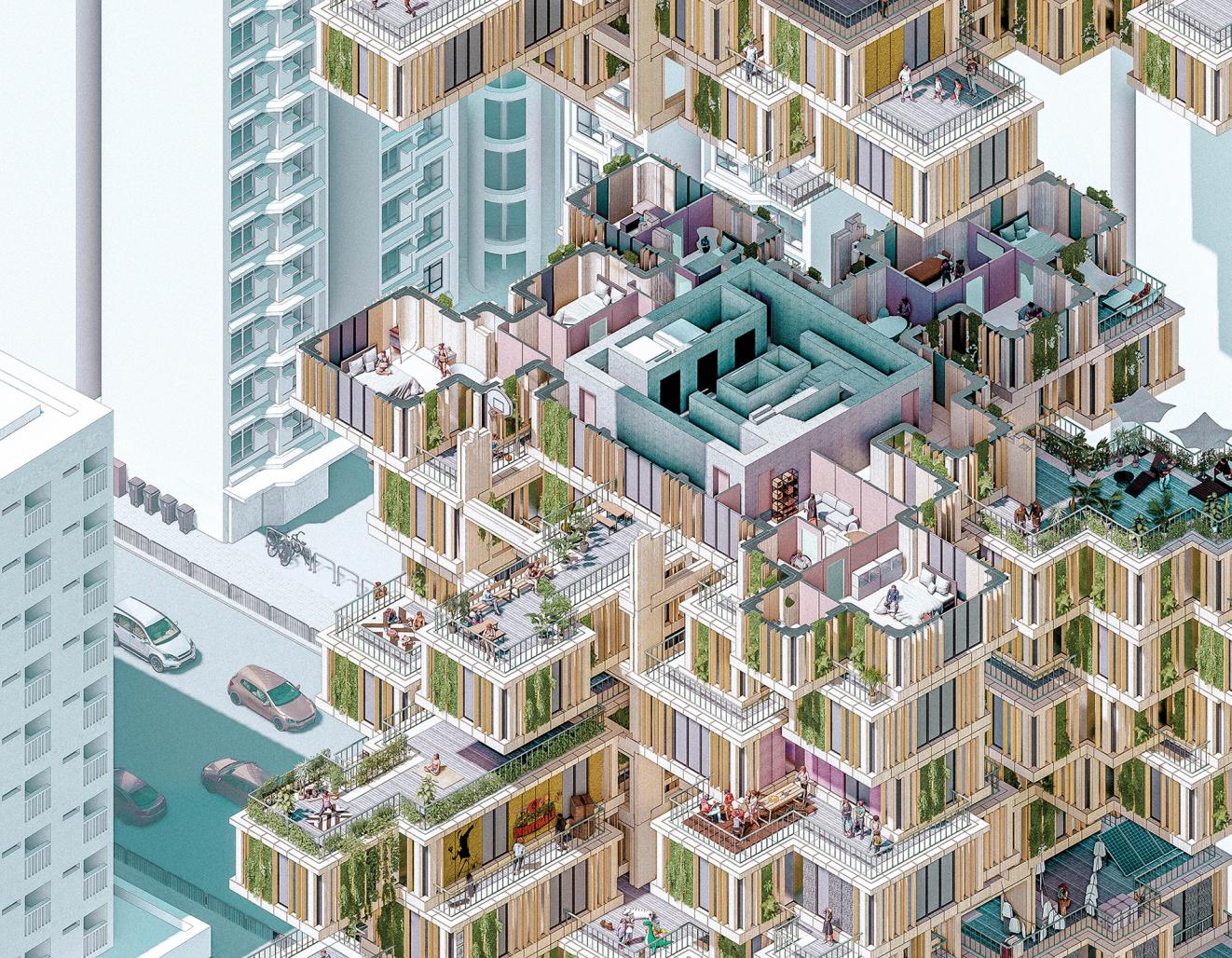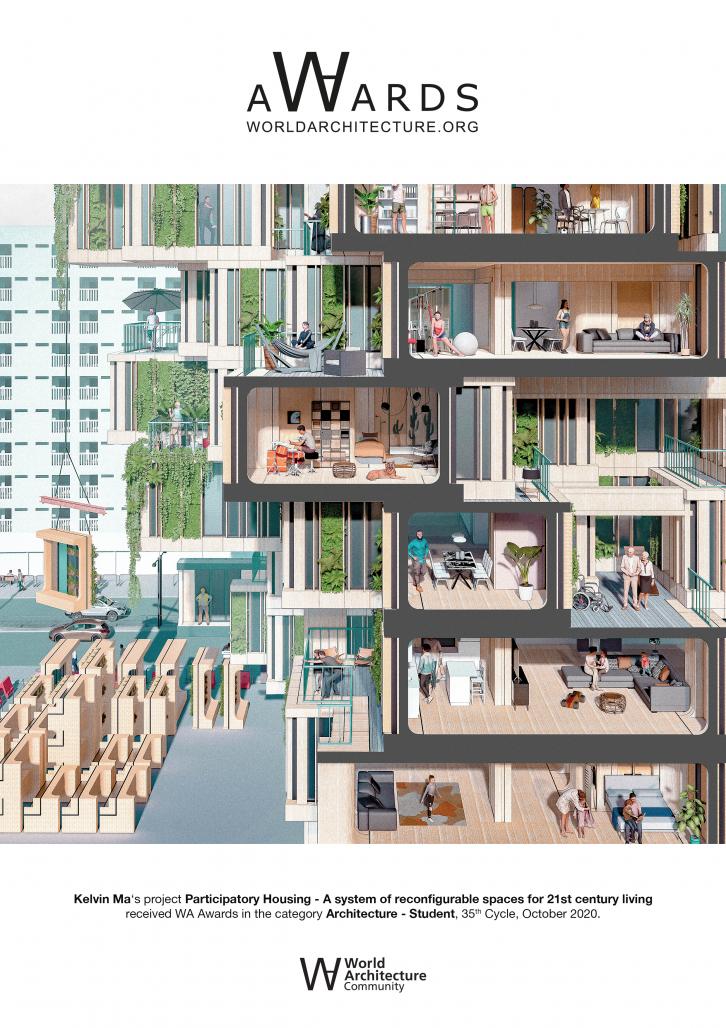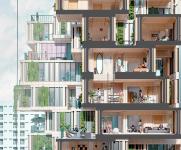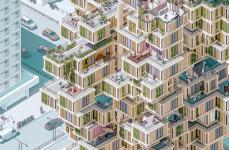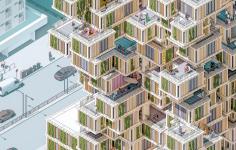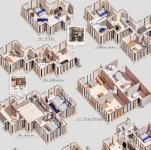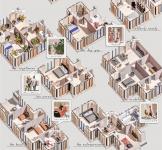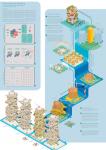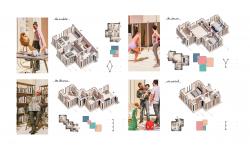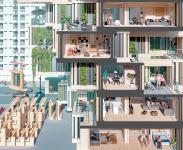This project has introduced reverse design methodology, not only using space syntax as an analytical tool but also a design tool that enhances the human living environment. Architects or users are no longer designing the outer shell of the space but designing the real space. By imputing the relationship between spaces, the new design methodology can be able to generate a series of spaces that fulfil architect or user needs, providing higher flexibility of spatial configurations and combinations.
The methodology of this thesis will be mostly based on data-driven algorithm design, it is separated into 3 major parts. First step is “parameter in”, manual inputting or big data can be adapted for imputing those data. Each user has its unique data set, the abstract personal preference and personal information is transformed into measurable data. After inputting all necessary data, it will be separated into 2 major parts: flat unit layout configuration and unit location-allocation. Two algorithms develop at the same time and influence each other. The designed algorithm is set to calculate the relationship between different users and programs. The algorithm will balance between different aspects.
The last step is “materialisation” which converts abstract space into physical architectural element. By aggregating discrete materials, it forms different spatial configurations according to the previous step. The combination of aggregation can fulfil different requirement for different floor plate geometry. From the changing of time, the residents’ requirements may change, move-out or move-in. Because of the system and structure are separated for every single floor and unit. The discrete material system allows the modification of the living unit, residents can upgrade and change the floor plate configuration.
This research aims to challenge the fundamental issue of living environment, and not being limited to design methodology and construction method. Social housing is simply a demonstration for one of the showcases of this mechanism.
2020
0000
The high customisation of public housing should equip a highly flexible and interactive housing allocation system. This thesis research is mainly focused on developing the connection between these three major elements: a distinctively flexible housing allocation system, an algorithm design system and a high degree of customization in construction methodology system for Public Housing in Hong Kong.
Different from traditional design process, reverse design methodology not only tests out different iteration and outcomes, but also anticipates every single users’ preferences into algorithm. Therefore, this system effectively acts as a tool for people to define what they specifically want and hence establishing a bridge connecting both physical environment and users.
The constant evaluation of our living habits with physical environment can be fed into the design cycle constantly. The continuity of collecting new data can keep updating and improving the physical environment. This interactive process establishes a new definition of participatory and bottom-up design. Digital model in computer is more than a duplicate version of physical tower, the constant interactions aim to blur the boundaries between digital and physical. This design process not only digitalise the architecture, but also to gain benefits and balances between different parties through utilise the computational power in this interactive process.
site area : 2000 sq. m
Height limit : 150 meters
Kelvin Ma Chun Yu
Participatory Housing - A system of reconfigurable spaces for 21st century living by Kelvin Ma in Hong Kong won the WA Award Cycle 35. Please find below the WA Award poster for this project.
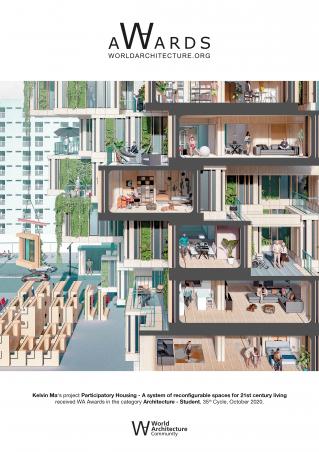
Downloaded 223 times.
Favorited 5 times
